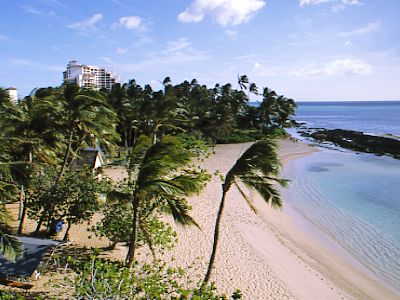The Historic Site Of The Paradise Cove

Paradise Cove is located at Ko Olina, an important historic site on the leeward coast of O’ahu. In the early 1940s, Alice Kamokila Campbell, an heir to the great plantations developed on Oahu’s ‘Ewa Plain by Irish immigrant James Campbell, leased about 37 acres of beachfront property in the Waimanalo area of Honouliuli. The beach place, which she named “Lanikauka’a,” included a thatched Hawaiian house and three “sacred pools” where Queen Ka’ahumanu, the favorite wife of Kamehameha I, was supposed to have bathed and performed certain religious rites.
Campbell renamed her beachfront estate “Lanikuhonua” and it is almost certain that this area, with its sacred pools, is referred to in Hawaiian history as Ko Olina, a lovely spot near the boundary of ‘Ewa and Wai’anae. The early caretaker of Ko Olina was Napua’ikamao and the area was a favorite vacationing spot of the high chief Kakuhihewa.
Around the turn of the last century, the Oahu Railway passed just inland of Ko Olina, and because of a lack of convenient public transportation, many teenagers from the neighboring camps of the Ewa Plantation caught the train to the pools. During World War II, the area adjacent Paradise Cove was used as a recreation center by Army and Navy servicemen.
The shoreline fronting the beaches at Ko Olina is a long shelf composed primarily of lava rock and raised coral reef. The large saltwater pool at Paradise Cove, most certainly one of the sacred pools of Ka’ahumanu, is situated at the shore’s edge and has a pristine sandy beach in front of it. The pool is separated from the ocean by natural walls of reef over which the waves flow to fill the pools. The cove is noted among local fisherman as good moi (Threadfin fish) grounds and a perfect location for the nightly Paradise Cove hukilau (gathering of fish using a seine or net pulled by many hands).




